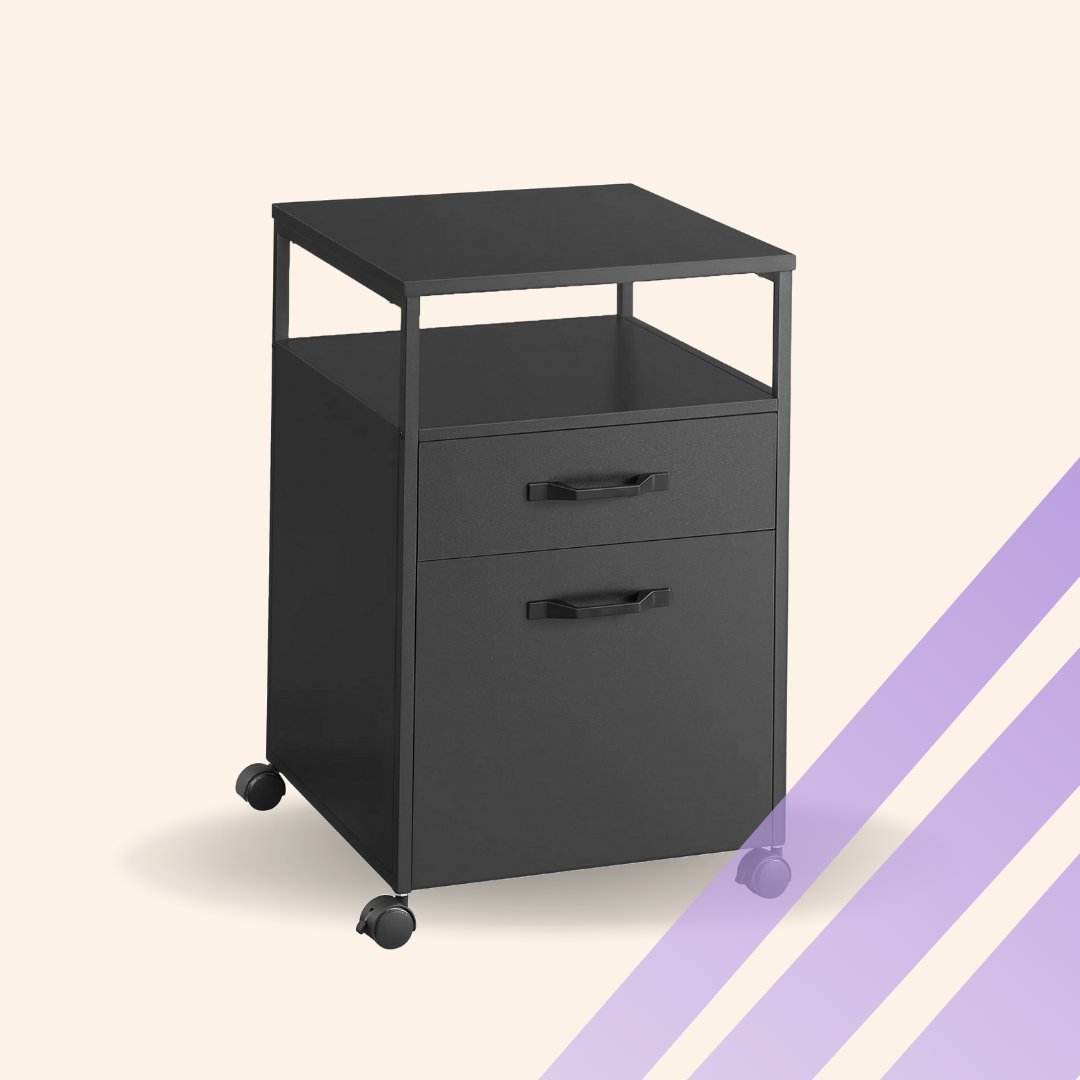+2% off
+5% off
+15% off
+20% off
{"uuid":"dbdcf887-5c5a-4f93-bb3f-4ccaf619db94","config":{"selected_countries_config":[],"show_progress_bar_in":["cart","product_page"],"style":{"--reward-font-size":"12px","--message-font-size":"17px","--progress-bar-height":"6px","--progress-bar-radius":"5px","--card-border-width":"1px","--card-border-radius":"10px","--card-background-color":"rgba(255, 255, 255, 1)","--card-border-color":"rgba(0, 0, 0, 1)","--message-text-color":"rgba(0, 0, 0, 0.68)","--reward-text-color":"rgb(112, 49, 231)","--progress-bar-empty-color":"rgba(228, 228, 228, 1)","--progress-bar-full-color":"rgba(65, 211, 138, 1)","--font-family":"inherit"}},"rewards":[{"goal_amount":10,"discount_amount":2,"discount_type":"percentage","unfulfilled_goal_text":"Add {{amount_left}} to get 2% off \u0026 free shipping! 🚚","order":4598,"discount_text":"+2% off"},{"goal_amount":20,"discount_amount":5,"discount_type":"percentage","unfulfilled_goal_text":"Add {{amount_left}} to get 5% off! 📢","order":4599,"discount_text":"+5% off"},{"goal_amount":50,"discount_amount":15,"discount_type":"percentage","unfulfilled_goal_text":"Add {{amount_left}} to get 15% discount!","order":4600,"discount_text":"+15% off"},{"goal_amount":100,"discount_amount":20,"discount_type":"percentage","unfulfilled_goal_text":"Add {{amount_left}} to get 20% discount!","order":4601,"discount_text":"+20% off"}],"shop":{"currency":"CAD","money_format":"${{amount}}","development_store":false,"subscription_active":false},"excluded_variant_ids":[{"id":"gid:\/\/shopify\/ProductVariant\/50332210037030"},{"id":"gid:\/\/shopify\/ProductVariant\/50332210069798"},{"id":"gid:\/\/shopify\/ProductVariant\/50332210102566"},{"id":"gid:\/\/shopify\/ProductVariant\/50332210135334"},{"id":"gid:\/\/shopify\/ProductVariant\/50332210168102"},{"id":"gid:\/\/shopify\/ProductVariant\/50332210200870"},{"id":"gid:\/\/shopify\/ProductVariant\/50332210233638"},{"id":"gid:\/\/shopify\/ProductVariant\/50332210266406"},{"id":"gid:\/\/shopify\/ProductVariant\/50332210299174"},{"id":"gid:\/\/shopify\/ProductVariant\/50332210331942"},{"id":"gid:\/\/shopify\/ProductVariant\/50332210364710"},{"id":"gid:\/\/shopify\/ProductVariant\/50332210397478"},{"id":"gid:\/\/shopify\/ProductVariant\/50332210430246"},{"id":"gid:\/\/shopify\/ProductVariant\/50332210463014"},{"id":"gid:\/\/shopify\/ProductVariant\/50332210495782"},{"id":"gid:\/\/shopify\/ProductVariant\/50332210528550"},{"id":"gid:\/\/shopify\/ProductVariant\/50332210561318"},{"id":"gid:\/\/shopify\/ProductVariant\/50332210594086"},{"id":"gid:\/\/shopify\/ProductVariant\/50332210626854"},{"id":"gid:\/\/shopify\/ProductVariant\/50332210659622"},{"id":"gid:\/\/shopify\/ProductVariant\/50332210692390"},{"id":"gid:\/\/shopify\/ProductVariant\/50332210725158"},{"id":"gid:\/\/shopify\/ProductVariant\/50332210757926"},{"id":"gid:\/\/shopify\/ProductVariant\/50332210790694"},{"id":"gid:\/\/shopify\/ProductVariant\/50332210823462"},{"id":"gid:\/\/shopify\/ProductVariant\/50332210856230"},{"id":"gid:\/\/shopify\/ProductVariant\/50332210888998"},{"id":"gid:\/\/shopify\/ProductVariant\/50332210921766"},{"id":"gid:\/\/shopify\/ProductVariant\/47756312117542"},{"id":"gid:\/\/shopify\/ProductVariant\/49279112249638"},{"id":"gid:\/\/shopify\/ProductVariant\/49279112282406"},{"id":"gid:\/\/shopify\/ProductVariant\/46504564785446"},{"id":"gid:\/\/shopify\/ProductVariant\/49636283416870"},{"id":"gid:\/\/shopify\/ProductVariant\/49636283449638"},{"id":"gid:\/\/shopify\/ProductVariant\/49636283482406"},{"id":"gid:\/\/shopify\/ProductVariant\/49636283515174"},{"id":"gid:\/\/shopify\/ProductVariant\/47752085373222"},{"id":"gid:\/\/shopify\/ProductVariant\/47752085405990"},{"id":"gid:\/\/shopify\/ProductVariant\/47752085438758"},{"id":"gid:\/\/shopify\/ProductVariant\/47752085471526"},{"id":"gid:\/\/shopify\/ProductVariant\/47752085504294"},{"id":"gid:\/\/shopify\/ProductVariant\/47752085537062"},{"id":"gid:\/\/shopify\/ProductVariant\/47752085569830"},{"id":"gid:\/\/shopify\/ProductVariant\/47752085602598"},{"id":"gid:\/\/shopify\/ProductVariant\/47758168555814"},{"id":"gid:\/\/shopify\/ProductVariant\/47752085635366"},{"id":"gid:\/\/shopify\/ProductVariant\/47752085668134"},{"id":"gid:\/\/shopify\/ProductVariant\/47752085700902"},{"id":"gid:\/\/shopify\/ProductVariant\/47752085733670"},{"id":"gid:\/\/shopify\/ProductVariant\/47752085766438"},{"id":"gid:\/\/shopify\/ProductVariant\/47752085799206"},{"id":"gid:\/\/shopify\/ProductVariant\/47752085831974"},{"id":"gid:\/\/shopify\/ProductVariant\/47752085864742"},{"id":"gid:\/\/shopify\/ProductVariant\/47752085897510"},{"id":"gid:\/\/shopify\/ProductVariant\/47758168588582"},{"id":"gid:\/\/shopify\/ProductVariant\/47752085930278"},{"id":"gid:\/\/shopify\/ProductVariant\/47752085963046"},{"id":"gid:\/\/shopify\/ProductVariant\/47752085995814"},{"id":"gid:\/\/shopify\/ProductVariant\/47752086028582"},{"id":"gid:\/\/shopify\/ProductVariant\/47752086061350"},{"id":"gid:\/\/shopify\/ProductVariant\/47939983409446"},{"id":"gid:\/\/shopify\/ProductVariant\/47752086094118"},{"id":"gid:\/\/shopify\/ProductVariant\/49109210595622"},{"id":"gid:\/\/shopify\/ProductVariant\/47752086126886"},{"id":"gid:\/\/shopify\/ProductVariant\/47758168621350"},{"id":"gid:\/\/shopify\/ProductVariant\/47752086159654"},{"id":"gid:\/\/shopify\/ProductVariant\/47752086192422"},{"id":"gid:\/\/shopify\/ProductVariant\/47752086225190"},{"id":"gid:\/\/shopify\/ProductVariant\/47752086257958"},{"id":"gid:\/\/shopify\/ProductVariant\/47752086290726"},{"id":"gid:\/\/shopify\/ProductVariant\/47752086323494"},{"id":"gid:\/\/shopify\/ProductVariant\/47939983442214"},{"id":"gid:\/\/shopify\/ProductVariant\/47939983474982"},{"id":"gid:\/\/shopify\/ProductVariant\/47752086389030"},{"id":"gid:\/\/shopify\/ProductVariant\/47758168654118"},{"id":"gid:\/\/shopify\/ProductVariant\/47752086421798"},{"id":"gid:\/\/shopify\/ProductVariant\/47752086454566"},{"id":"gid:\/\/shopify\/ProductVariant\/47752086487334"},{"id":"gid:\/\/shopify\/ProductVariant\/47752086520102"},{"id":"gid:\/\/shopify\/ProductVariant\/47752086552870"},{"id":"gid:\/\/shopify\/ProductVariant\/47752086585638"},{"id":"gid:\/\/shopify\/ProductVariant\/47752086618406"},{"id":"gid:\/\/shopify\/ProductVariant\/47752086651174"},{"id":"gid:\/\/shopify\/ProductVariant\/47752086683942"},{"id":"gid:\/\/shopify\/ProductVariant\/47758168686886"},{"id":"gid:\/\/shopify\/ProductVariant\/47752086716710"},{"id":"gid:\/\/shopify\/ProductVariant\/47752086749478"},{"id":"gid:\/\/shopify\/ProductVariant\/47752086782246"},{"id":"gid:\/\/shopify\/ProductVariant\/47752086815014"},{"id":"gid:\/\/shopify\/ProductVariant\/47752086847782"},{"id":"gid:\/\/shopify\/ProductVariant\/47752086880550"},{"id":"gid:\/\/shopify\/ProductVariant\/47752086913318"},{"id":"gid:\/\/shopify\/ProductVariant\/47752086946086"},{"id":"gid:\/\/shopify\/ProductVariant\/47752086978854"},{"id":"gid:\/\/shopify\/ProductVariant\/47758168719654"},{"id":"gid:\/\/shopify\/ProductVariant\/47752087011622"},{"id":"gid:\/\/shopify\/ProductVariant\/50343834583334"},{"id":"gid:\/\/shopify\/ProductVariant\/50343834616102"},{"id":"gid:\/\/shopify\/ProductVariant\/50343834648870"},{"id":"gid:\/\/shopify\/ProductVariant\/50343834681638"},{"id":"gid:\/\/shopify\/ProductVariant\/50343834714406"},{"id":"gid:\/\/shopify\/ProductVariant\/50343834747174"},{"id":"gid:\/\/shopify\/ProductVariant\/50343834779942"},{"id":"gid:\/\/shopify\/ProductVariant\/50343834812710"},{"id":"gid:\/\/shopify\/ProductVariant\/50343834845478"},{"id":"gid:\/\/shopify\/ProductVariant\/50343834878246"},{"id":"gid:\/\/shopify\/ProductVariant\/50343834911014"},{"id":"gid:\/\/shopify\/ProductVariant\/50343834943782"},{"id":"gid:\/\/shopify\/ProductVariant\/50343834976550"},{"id":"gid:\/\/shopify\/ProductVariant\/50343835009318"},{"id":"gid:\/\/shopify\/ProductVariant\/50343835042086"},{"id":"gid:\/\/shopify\/ProductVariant\/50343835074854"},{"id":"gid:\/\/shopify\/ProductVariant\/50343835107622"},{"id":"gid:\/\/shopify\/ProductVariant\/50343835140390"},{"id":"gid:\/\/shopify\/ProductVariant\/50343835173158"},{"id":"gid:\/\/shopify\/ProductVariant\/50343835205926"},{"id":"gid:\/\/shopify\/ProductVariant\/50343835238694"},{"id":"gid:\/\/shopify\/ProductVariant\/50343835271462"},{"id":"gid:\/\/shopify\/ProductVariant\/50343835304230"},{"id":"gid:\/\/shopify\/ProductVariant\/50343835336998"},{"id":"gid:\/\/shopify\/ProductVariant\/50343835369766"},{"id":"gid:\/\/shopify\/ProductVariant\/50343835402534"},{"id":"gid:\/\/shopify\/ProductVariant\/50343835435302"},{"id":"gid:\/\/shopify\/ProductVariant\/50343835468070"},{"id":"gid:\/\/shopify\/ProductVariant\/50343835500838"},{"id":"gid:\/\/shopify\/ProductVariant\/50343835533606"},{"id":"gid:\/\/shopify\/ProductVariant\/50343835566374"},{"id":"gid:\/\/shopify\/ProductVariant\/50343835599142"},{"id":"gid:\/\/shopify\/ProductVariant\/50343835631910"},{"id":"gid:\/\/shopify\/ProductVariant\/50343835664678"},{"id":"gid:\/\/shopify\/ProductVariant\/50343835697446"},{"id":"gid:\/\/shopify\/ProductVariant\/50331260322086"},{"id":"gid:\/\/shopify\/ProductVariant\/50332313321766"},{"id":"gid:\/\/shopify\/ProductVariant\/50332313354534"},{"id":"gid:\/\/shopify\/ProductVariant\/50332313387302"},{"id":"gid:\/\/shopify\/ProductVariant\/50332313420070"},{"id":"gid:\/\/shopify\/ProductVariant\/50332313452838"},{"id":"gid:\/\/shopify\/ProductVariant\/50332313485606"},{"id":"gid:\/\/shopify\/ProductVariant\/50332313518374"},{"id":"gid:\/\/shopify\/ProductVariant\/50332313551142"},{"id":"gid:\/\/shopify\/ProductVariant\/50332313583910"},{"id":"gid:\/\/shopify\/ProductVariant\/50332313616678"},{"id":"gid:\/\/shopify\/ProductVariant\/50332313649446"},{"id":"gid:\/\/shopify\/ProductVariant\/50332313682214"},{"id":"gid:\/\/shopify\/ProductVariant\/50332313714982"},{"id":"gid:\/\/shopify\/ProductVariant\/50332313747750"},{"id":"gid:\/\/shopify\/ProductVariant\/50332313780518"},{"id":"gid:\/\/shopify\/ProductVariant\/50332313813286"},{"id":"gid:\/\/shopify\/ProductVariant\/50332313846054"},{"id":"gid:\/\/shopify\/ProductVariant\/50332313878822"},{"id":"gid:\/\/shopify\/ProductVariant\/50332313911590"},{"id":"gid:\/\/shopify\/ProductVariant\/50332313944358"},{"id":"gid:\/\/shopify\/ProductVariant\/50332313977126"},{"id":"gid:\/\/shopify\/ProductVariant\/50332314009894"},{"id":"gid:\/\/shopify\/ProductVariant\/50332314042662"},{"id":"gid:\/\/shopify\/ProductVariant\/50332314075430"},{"id":"gid:\/\/shopify\/ProductVariant\/50332314108198"},{"id":"gid:\/\/shopify\/ProductVariant\/50332314140966"},{"id":"gid:\/\/shopify\/ProductVariant\/50332314173734"},{"id":"gid:\/\/shopify\/ProductVariant\/50332314206502"},{"id":"gid:\/\/shopify\/ProductVariant\/50332314239270"},{"id":"gid:\/\/shopify\/ProductVariant\/50332314272038"},{"id":"gid:\/\/shopify\/ProductVariant\/50332314304806"},{"id":"gid:\/\/shopify\/ProductVariant\/50332314337574"},{"id":"gid:\/\/shopify\/ProductVariant\/50332314370342"},{"id":"gid:\/\/shopify\/ProductVariant\/50332314403110"},{"id":"gid:\/\/shopify\/ProductVariant\/50332314435878"},{"id":"gid:\/\/shopify\/ProductVariant\/50332314468646"},{"id":"gid:\/\/shopify\/ProductVariant\/50332314501414"},{"id":"gid:\/\/shopify\/ProductVariant\/50332314534182"},{"id":"gid:\/\/shopify\/ProductVariant\/50332314566950"},{"id":"gid:\/\/shopify\/ProductVariant\/50332314599718"},{"id":"gid:\/\/shopify\/ProductVariant\/50332314632486"},{"id":"gid:\/\/shopify\/ProductVariant\/50332314665254"},{"id":"gid:\/\/shopify\/ProductVariant\/50332314698022"},{"id":"gid:\/\/shopify\/ProductVariant\/50332314730790"},{"id":"gid:\/\/shopify\/ProductVariant\/50332314763558"},{"id":"gid:\/\/shopify\/ProductVariant\/50332314796326"},{"id":"gid:\/\/shopify\/ProductVariant\/50332314829094"},{"id":"gid:\/\/shopify\/ProductVariant\/50332314861862"},{"id":"gid:\/\/shopify\/ProductVariant\/50332314894630"},{"id":"gid:\/\/shopify\/ProductVariant\/50332314927398"},{"id":"gid:\/\/shopify\/ProductVariant\/50332314960166"},{"id":"gid:\/\/shopify\/ProductVariant\/50332314992934"},{"id":"gid:\/\/shopify\/ProductVariant\/50331269792038"},{"id":"gid:\/\/shopify\/ProductVariant\/50331269824806"},{"id":"gid:\/\/shopify\/ProductVariant\/50343835959590"},{"id":"gid:\/\/shopify\/ProductVariant\/50343835992358"},{"id":"gid:\/\/shopify\/ProductVariant\/50343836025126"},{"id":"gid:\/\/shopify\/ProductVariant\/50343836057894"},{"id":"gid:\/\/shopify\/ProductVariant\/50343836090662"},{"id":"gid:\/\/shopify\/ProductVariant\/50343836123430"},{"id":"gid:\/\/shopify\/ProductVariant\/50343836156198"},{"id":"gid:\/\/shopify\/ProductVariant\/50343836188966"},{"id":"gid:\/\/shopify\/ProductVariant\/50343836221734"},{"id":"gid:\/\/shopify\/ProductVariant\/50343836254502"},{"id":"gid:\/\/shopify\/ProductVariant\/50343836287270"},{"id":"gid:\/\/shopify\/ProductVariant\/50343836320038"},{"id":"gid:\/\/shopify\/ProductVariant\/50343836352806"},{"id":"gid:\/\/shopify\/ProductVariant\/50343836385574"},{"id":"gid:\/\/shopify\/ProductVariant\/50343836418342"},{"id":"gid:\/\/shopify\/ProductVariant\/50343836451110"},{"id":"gid:\/\/shopify\/ProductVariant\/50343836483878"},{"id":"gid:\/\/shopify\/ProductVariant\/50343836516646"},{"id":"gid:\/\/shopify\/ProductVariant\/50343836549414"},{"id":"gid:\/\/shopify\/ProductVariant\/50343836582182"},{"id":"gid:\/\/shopify\/ProductVariant\/50343836614950"},{"id":"gid:\/\/shopify\/ProductVariant\/50343836647718"},{"id":"gid:\/\/shopify\/ProductVariant\/50343836680486"},{"id":"gid:\/\/shopify\/ProductVariant\/50343836713254"},{"id":"gid:\/\/shopify\/ProductVariant\/50343836746022"},{"id":"gid:\/\/shopify\/ProductVariant\/50343836778790"},{"id":"gid:\/\/shopify\/ProductVariant\/50343836811558"},{"id":"gid:\/\/shopify\/ProductVariant\/50343836844326"},{"id":"gid:\/\/shopify\/ProductVariant\/50343836877094"},{"id":"gid:\/\/shopify\/ProductVariant\/50343836909862"},{"id":"gid:\/\/shopify\/ProductVariant\/50343836942630"},{"id":"gid:\/\/shopify\/ProductVariant\/50343836975398"},{"id":"gid:\/\/shopify\/ProductVariant\/50343837008166"},{"id":"gid:\/\/shopify\/ProductVariant\/50343837040934"},{"id":"gid:\/\/shopify\/ProductVariant\/50343837073702"},{"id":"gid:\/\/shopify\/ProductVariant\/50343837106470"},{"id":"gid:\/\/shopify\/ProductVariant\/50343837139238"},{"id":"gid:\/\/shopify\/ProductVariant\/50343837172006"},{"id":"gid:\/\/shopify\/ProductVariant\/50343837204774"},{"id":"gid:\/\/shopify\/ProductVariant\/50343837237542"},{"id":"gid:\/\/shopify\/ProductVariant\/50343837270310"},{"id":"gid:\/\/shopify\/ProductVariant\/50343837303078"},{"id":"gid:\/\/shopify\/ProductVariant\/50343837335846"},{"id":"gid:\/\/shopify\/ProductVariant\/50343837368614"},{"id":"gid:\/\/shopify\/ProductVariant\/50343837401382"},{"id":"gid:\/\/shopify\/ProductVariant\/50343837434150"},{"id":"gid:\/\/shopify\/ProductVariant\/50343837466918"},{"id":"gid:\/\/shopify\/ProductVariant\/50343837499686"},{"id":"gid:\/\/shopify\/ProductVariant\/50343837532454"},{"id":"gid:\/\/shopify\/ProductVariant\/50343837565222"},{"id":"gid:\/\/shopify\/ProductVariant\/50343837597990"},{"id":"gid:\/\/shopify\/ProductVariant\/50343837630758"},{"id":"gid:\/\/shopify\/ProductVariant\/50343837663526"},{"id":"gid:\/\/shopify\/ProductVariant\/50343837696294"},{"id":"gid:\/\/shopify\/ProductVariant\/50343837729062"},{"id":"gid:\/\/shopify\/ProductVariant\/50343837761830"},{"id":"gid:\/\/shopify\/ProductVariant\/50343837794598"},{"id":"gid:\/\/shopify\/ProductVariant\/50343837827366"},{"id":"gid:\/\/shopify\/ProductVariant\/50343837860134"},{"id":"gid:\/\/shopify\/ProductVariant\/50343837892902"},{"id":"gid:\/\/shopify\/ProductVariant\/50343837925670"},{"id":"gid:\/\/shopify\/ProductVariant\/50343837958438"},{"id":"gid:\/\/shopify\/ProductVariant\/50343837991206"},{"id":"gid:\/\/shopify\/ProductVariant\/50343838023974"},{"id":"gid:\/\/shopify\/ProductVariant\/50343838056742"},{"id":"gid:\/\/shopify\/ProductVariant\/50343838089510"},{"id":"gid:\/\/shopify\/ProductVariant\/50343838122278"},{"id":"gid:\/\/shopify\/ProductVariant\/50343838155046"},{"id":"gid:\/\/shopify\/ProductVariant\/50343838187814"},{"id":"gid:\/\/shopify\/ProductVariant\/50343838220582"},{"id":"gid:\/\/shopify\/ProductVariant\/50343838253350"},{"id":"gid:\/\/shopify\/ProductVariant\/50343838286118"},{"id":"gid:\/\/shopify\/ProductVariant\/50343838318886"},{"id":"gid:\/\/shopify\/ProductVariant\/50343838351654"},{"id":"gid:\/\/shopify\/ProductVariant\/50343838384422"},{"id":"gid:\/\/shopify\/ProductVariant\/50343838417190"},{"id":"gid:\/\/shopify\/ProductVariant\/50343838449958"},{"id":"gid:\/\/shopify\/ProductVariant\/50343838482726"},{"id":"gid:\/\/shopify\/ProductVariant\/50343838515494"},{"id":"gid:\/\/shopify\/ProductVariant\/50343838548262"},{"id":"gid:\/\/shopify\/ProductVariant\/50343838581030"},{"id":"gid:\/\/shopify\/ProductVariant\/50343838613798"},{"id":"gid:\/\/shopify\/ProductVariant\/50343838646566"},{"id":"gid:\/\/shopify\/ProductVariant\/50343838679334"},{"id":"gid:\/\/shopify\/ProductVariant\/50343838712102"},{"id":"gid:\/\/shopify\/ProductVariant\/47756198969638"},{"id":"gid:\/\/shopify\/ProductVariant\/47756199002406"},{"id":"gid:\/\/shopify\/ProductVariant\/47752087372070"},{"id":"gid:\/\/shopify\/ProductVariant\/50332290908454"},{"id":"gid:\/\/shopify\/ProductVariant\/50332304769318"},{"id":"gid:\/\/shopify\/ProductVariant\/50331404566822"},{"id":"gid:\/\/shopify\/ProductVariant\/50331404599590"},{"id":"gid:\/\/shopify\/ProductVariant\/50331404632358"},{"id":"gid:\/\/shopify\/ProductVariant\/50331404665126"},{"id":"gid:\/\/shopify\/ProductVariant\/50331404697894"},{"id":"gid:\/\/shopify\/ProductVariant\/50331404730662"},{"id":"gid:\/\/shopify\/ProductVariant\/50331404763430"},{"id":"gid:\/\/shopify\/ProductVariant\/50331404796198"},{"id":"gid:\/\/shopify\/ProductVariant\/50331404828966"},{"id":"gid:\/\/shopify\/ProductVariant\/50331404861734"},{"id":"gid:\/\/shopify\/ProductVariant\/50331404894502"},{"id":"gid:\/\/shopify\/ProductVariant\/50331404927270"},{"id":"gid:\/\/shopify\/ProductVariant\/50331404960038"},{"id":"gid:\/\/shopify\/ProductVariant\/50331404992806"},{"id":"gid:\/\/shopify\/ProductVariant\/50331405025574"},{"id":"gid:\/\/shopify\/ProductVariant\/50331405058342"},{"id":"gid:\/\/shopify\/ProductVariant\/50331405091110"},{"id":"gid:\/\/shopify\/ProductVariant\/50331405123878"},{"id":"gid:\/\/shopify\/ProductVariant\/50331405156646"},{"id":"gid:\/\/shopify\/ProductVariant\/50331405189414"},{"id":"gid:\/\/shopify\/ProductVariant\/50331405222182"},{"id":"gid:\/\/shopify\/ProductVariant\/50331405254950"},{"id":"gid:\/\/shopify\/ProductVariant\/50331405287718"},{"id":"gid:\/\/shopify\/ProductVariant\/50331405320486"},{"id":"gid:\/\/shopify\/ProductVariant\/50331405353254"},{"id":"gid:\/\/shopify\/ProductVariant\/50331405386022"},{"id":"gid:\/\/shopify\/ProductVariant\/50331405418790"},{"id":"gid:\/\/shopify\/ProductVariant\/50331405451558"},{"id":"gid:\/\/shopify\/ProductVariant\/50331405484326"},{"id":"gid:\/\/shopify\/ProductVariant\/50331405517094"},{"id":"gid:\/\/shopify\/ProductVariant\/50331405549862"},{"id":"gid:\/\/shopify\/ProductVariant\/50331405582630"},{"id":"gid:\/\/shopify\/ProductVariant\/50331405615398"},{"id":"gid:\/\/shopify\/ProductVariant\/50331405648166"},{"id":"gid:\/\/shopify\/ProductVariant\/50331405680934"},{"id":"gid:\/\/shopify\/ProductVariant\/50331405713702"},{"id":"gid:\/\/shopify\/ProductVariant\/50331405746470"},{"id":"gid:\/\/shopify\/ProductVariant\/50331405779238"},{"id":"gid:\/\/shopify\/ProductVariant\/50331405812006"},{"id":"gid:\/\/shopify\/ProductVariant\/50331405844774"},{"id":"gid:\/\/shopify\/ProductVariant\/50331405877542"},{"id":"gid:\/\/shopify\/ProductVariant\/50331405910310"},{"id":"gid:\/\/shopify\/ProductVariant\/50331405943078"},{"id":"gid:\/\/shopify\/ProductVariant\/50331405975846"},{"id":"gid:\/\/shopify\/ProductVariant\/50331406008614"},{"id":"gid:\/\/shopify\/ProductVariant\/50331406041382"},{"id":"gid:\/\/shopify\/ProductVariant\/50331406074150"},{"id":"gid:\/\/shopify\/ProductVariant\/50331406106918"},{"id":"gid:\/\/shopify\/ProductVariant\/50331406139686"},{"id":"gid:\/\/shopify\/ProductVariant\/50331406172454"},{"id":"gid:\/\/shopify\/ProductVariant\/50331406205222"},{"id":"gid:\/\/shopify\/ProductVariant\/50331406237990"},{"id":"gid:\/\/shopify\/ProductVariant\/50331406270758"},{"id":"gid:\/\/shopify\/ProductVariant\/50331406303526"},{"id":"gid:\/\/shopify\/ProductVariant\/50331406336294"},{"id":"gid:\/\/shopify\/ProductVariant\/50331406369062"},{"id":"gid:\/\/shopify\/ProductVariant\/50331406401830"},{"id":"gid:\/\/shopify\/ProductVariant\/50331406434598"},{"id":"gid:\/\/shopify\/ProductVariant\/50331406467366"},{"id":"gid:\/\/shopify\/ProductVariant\/50331406500134"},{"id":"gid:\/\/shopify\/ProductVariant\/50331406532902"},{"id":"gid:\/\/shopify\/ProductVariant\/50331406565670"},{"id":"gid:\/\/shopify\/ProductVariant\/50331406598438"},{"id":"gid:\/\/shopify\/ProductVariant\/50331406631206"},{"id":"gid:\/\/shopify\/ProductVariant\/50331406663974"},{"id":"gid:\/\/shopify\/ProductVariant\/50331406696742"},{"id":"gid:\/\/shopify\/ProductVariant\/50331406729510"},{"id":"gid:\/\/shopify\/ProductVariant\/50331406762278"},{"id":"gid:\/\/shopify\/ProductVariant\/50331406795046"},{"id":"gid:\/\/shopify\/ProductVariant\/50331406827814"},{"id":"gid:\/\/shopify\/ProductVariant\/50331406860582"},{"id":"gid:\/\/shopify\/ProductVariant\/50331406893350"},{"id":"gid:\/\/shopify\/ProductVariant\/50331406926118"},{"id":"gid:\/\/shopify\/ProductVariant\/50331406958886"},{"id":"gid:\/\/shopify\/ProductVariant\/50331406991654"},{"id":"gid:\/\/shopify\/ProductVariant\/50331407024422"},{"id":"gid:\/\/shopify\/ProductVariant\/50331407057190"},{"id":"gid:\/\/shopify\/ProductVariant\/50331407089958"},{"id":"gid:\/\/shopify\/ProductVariant\/50331407122726"},{"id":"gid:\/\/shopify\/ProductVariant\/50331407155494"},{"id":"gid:\/\/shopify\/ProductVariant\/50331407188262"},{"id":"gid:\/\/shopify\/ProductVariant\/50331407221030"},{"id":"gid:\/\/shopify\/ProductVariant\/50331407253798"},{"id":"gid:\/\/shopify\/ProductVariant\/50331407286566"},{"id":"gid:\/\/shopify\/ProductVariant\/50331407319334"},{"id":"gid:\/\/shopify\/ProductVariant\/50331407352102"},{"id":"gid:\/\/shopify\/ProductVariant\/50331407384870"},{"id":"gid:\/\/shopify\/ProductVariant\/50331407417638"},{"id":"gid:\/\/shopify\/ProductVariant\/50331407450406"},{"id":"gid:\/\/shopify\/ProductVariant\/50331407483174"},{"id":"gid:\/\/shopify\/ProductVariant\/50331407515942"},{"id":"gid:\/\/shopify\/ProductVariant\/50331407548710"},{"id":"gid:\/\/shopify\/ProductVariant\/50331407581478"},{"id":"gid:\/\/shopify\/ProductVariant\/50331407614246"},{"id":"gid:\/\/shopify\/ProductVariant\/50331407647014"},{"id":"gid:\/\/shopify\/ProductVariant\/50331407679782"},{"id":"gid:\/\/shopify\/ProductVariant\/50331407712550"},{"id":"gid:\/\/shopify\/ProductVariant\/50331407745318"},{"id":"gid:\/\/shopify\/ProductVariant\/50331407778086"},{"id":"gid:\/\/shopify\/ProductVariant\/50331407810854"},{"id":"gid:\/\/shopify\/ProductVariant\/50334392779046"},{"id":"gid:\/\/shopify\/ProductVariant\/50334392811814"},{"id":"gid:\/\/shopify\/ProductVariant\/50334392844582"},{"id":"gid:\/\/shopify\/ProductVariant\/50334392877350"},{"id":"gid:\/\/shopify\/ProductVariant\/50334392910118"},{"id":"gid:\/\/shopify\/ProductVariant\/50334392942886"},{"id":"gid:\/\/shopify\/ProductVariant\/50334392975654"},{"id":"gid:\/\/shopify\/ProductVariant\/50334393008422"},{"id":"gid:\/\/shopify\/ProductVariant\/49109224390950"},{"id":"gid:\/\/shopify\/ProductVariant\/49109224423718"},{"id":"gid:\/\/shopify\/ProductVariant\/49109224456486"},{"id":"gid:\/\/shopify\/ProductVariant\/50334410539302"},{"id":"gid:\/\/shopify\/ProductVariant\/50334410572070"},{"id":"gid:\/\/shopify\/ProductVariant\/50332204466470"},{"id":"gid:\/\/shopify\/ProductVariant\/50332204499238"},{"id":"gid:\/\/shopify\/ProductVariant\/50332204532006"},{"id":"gid:\/\/shopify\/ProductVariant\/50332204564774"},{"id":"gid:\/\/shopify\/ProductVariant\/50332204597542"},{"id":"gid:\/\/shopify\/ProductVariant\/50332204630310"},{"id":"gid:\/\/shopify\/ProductVariant\/50332204663078"},{"id":"gid:\/\/shopify\/ProductVariant\/50332204695846"},{"id":"gid:\/\/shopify\/ProductVariant\/50332204728614"},{"id":"gid:\/\/shopify\/ProductVariant\/50332204761382"},{"id":"gid:\/\/shopify\/ProductVariant\/50332329672998"},{"id":"gid:\/\/shopify\/ProductVariant\/50343822328102"},{"id":"gid:\/\/shopify\/ProductVariant\/50343822360870"},{"id":"gid:\/\/shopify\/ProductVariant\/50343822393638"},{"id":"gid:\/\/shopify\/ProductVariant\/50343822426406"},{"id":"gid:\/\/shopify\/ProductVariant\/50343822459174"},{"id":"gid:\/\/shopify\/ProductVariant\/50343822491942"},{"id":"gid:\/\/shopify\/ProductVariant\/50343822524710"},{"id":"gid:\/\/shopify\/ProductVariant\/50343822557478"},{"id":"gid:\/\/shopify\/ProductVariant\/50343822590246"},{"id":"gid:\/\/shopify\/ProductVariant\/50343822623014"},{"id":"gid:\/\/shopify\/ProductVariant\/50343822655782"},{"id":"gid:\/\/shopify\/ProductVariant\/50343822688550"},{"id":"gid:\/\/shopify\/ProductVariant\/50343822721318"},{"id":"gid:\/\/shopify\/ProductVariant\/50343822754086"},{"id":"gid:\/\/shopify\/ProductVariant\/50343822786854"},{"id":"gid:\/\/shopify\/ProductVariant\/50343822819622"},{"id":"gid:\/\/shopify\/ProductVariant\/50343822852390"},{"id":"gid:\/\/shopify\/ProductVariant\/50343822885158"},{"id":"gid:\/\/shopify\/ProductVariant\/50343822917926"},{"id":"gid:\/\/shopify\/ProductVariant\/50343822950694"},{"id":"gid:\/\/shopify\/ProductVariant\/50343822983462"},{"id":"gid:\/\/shopify\/ProductVariant\/50343823016230"},{"id":"gid:\/\/shopify\/ProductVariant\/50343823048998"},{"id":"gid:\/\/shopify\/ProductVariant\/50343823081766"},{"id":"gid:\/\/shopify\/ProductVariant\/50343823114534"},{"id":"gid:\/\/shopify\/ProductVariant\/50343823147302"},{"id":"gid:\/\/shopify\/ProductVariant\/50343823180070"},{"id":"gid:\/\/shopify\/ProductVariant\/50343823212838"},{"id":"gid:\/\/shopify\/ProductVariant\/50343823245606"},{"id":"gid:\/\/shopify\/ProductVariant\/50343823278374"},{"id":"gid:\/\/shopify\/ProductVariant\/50343823311142"},{"id":"gid:\/\/shopify\/ProductVariant\/50343823343910"},{"id":"gid:\/\/shopify\/ProductVariant\/50343823376678"},{"id":"gid:\/\/shopify\/ProductVariant\/50343823409446"},{"id":"gid:\/\/shopify\/ProductVariant\/50343823442214"},{"id":"gid:\/\/shopify\/ProductVariant\/50343823474982"},{"id":"gid:\/\/shopify\/ProductVariant\/50343823507750"},{"id":"gid:\/\/shopify\/ProductVariant\/50343823540518"},{"id":"gid:\/\/shopify\/ProductVariant\/50343823573286"},{"id":"gid:\/\/shopify\/ProductVariant\/50343823606054"},{"id":"gid:\/\/shopify\/ProductVariant\/50343823638822"},{"id":"gid:\/\/shopify\/ProductVariant\/50343823671590"},{"id":"gid:\/\/shopify\/ProductVariant\/50343823704358"},{"id":"gid:\/\/shopify\/ProductVariant\/50343823737126"},{"id":"gid:\/\/shopify\/ProductVariant\/50343823769894"},{"id":"gid:\/\/shopify\/ProductVariant\/50343823802662"},{"id":"gid:\/\/shopify\/ProductVariant\/50343823835430"},{"id":"gid:\/\/shopify\/ProductVariant\/50343823868198"},{"id":"gid:\/\/shopify\/ProductVariant\/50343823900966"},{"id":"gid:\/\/shopify\/ProductVariant\/50343823933734"},{"id":"gid:\/\/shopify\/ProductVariant\/50343823966502"},{"id":"gid:\/\/shopify\/ProductVariant\/50343823999270"},{"id":"gid:\/\/shopify\/ProductVariant\/50343824032038"},{"id":"gid:\/\/shopify\/ProductVariant\/50343824064806"},{"id":"gid:\/\/shopify\/ProductVariant\/50343824097574"},{"id":"gid:\/\/shopify\/ProductVariant\/50343824130342"},{"id":"gid:\/\/shopify\/ProductVariant\/50343824163110"},{"id":"gid:\/\/shopify\/ProductVariant\/50343824195878"},{"id":"gid:\/\/shopify\/ProductVariant\/50343824228646"},{"id":"gid:\/\/shopify\/ProductVariant\/50343824261414"},{"id":"gid:\/\/shopify\/ProductVariant\/50343824294182"},{"id":"gid:\/\/shopify\/ProductVariant\/50343824326950"},{"id":"gid:\/\/shopify\/ProductVariant\/50343824359718"},{"id":"gid:\/\/shopify\/ProductVariant\/50343824392486"},{"id":"gid:\/\/shopify\/ProductVariant\/50343824425254"},{"id":"gid:\/\/shopify\/ProductVariant\/50343824458022"},{"id":"gid:\/\/shopify\/ProductVariant\/50343824490790"},{"id":"gid:\/\/shopify\/ProductVariant\/50343824523558"},{"id":"gid:\/\/shopify\/ProductVariant\/50343824556326"},{"id":"gid:\/\/shopify\/ProductVariant\/50343824589094"},{"id":"gid:\/\/shopify\/ProductVariant\/50343824621862"},{"id":"gid:\/\/shopify\/ProductVariant\/50343824654630"},{"id":"gid:\/\/shopify\/ProductVariant\/50343824687398"},{"id":"gid:\/\/shopify\/ProductVariant\/50343824720166"},{"id":"gid:\/\/shopify\/ProductVariant\/50343824752934"},{"id":"gid:\/\/shopify\/ProductVariant\/50343824785702"},{"id":"gid:\/\/shopify\/ProductVariant\/50343824818470"},{"id":"gid:\/\/shopify\/ProductVariant\/50343824851238"},{"id":"gid:\/\/shopify\/ProductVariant\/50343824884006"},{"id":"gid:\/\/shopify\/ProductVariant\/50343824916774"},{"id":"gid:\/\/shopify\/ProductVariant\/50343824949542"},{"id":"gid:\/\/shopify\/ProductVariant\/50343824982310"},{"id":"gid:\/\/shopify\/ProductVariant\/50343825015078"},{"id":"gid:\/\/shopify\/ProductVariant\/50343825047846"},{"id":"gid:\/\/shopify\/ProductVariant\/50343825080614"},{"id":"gid:\/\/shopify\/ProductVariant\/49636273815846"},{"id":"gid:\/\/shopify\/ProductVariant\/49636273848614"},{"id":"gid:\/\/shopify\/ProductVariant\/49636273881382"},{"id":"gid:\/\/shopify\/ProductVariant\/49636273914150"},{"id":"gid:\/\/shopify\/ProductVariant\/49636273946918"},{"id":"gid:\/\/shopify\/ProductVariant\/49636273979686"},{"id":"gid:\/\/shopify\/ProductVariant\/49636274012454"},{"id":"gid:\/\/shopify\/ProductVariant\/49636274045222"},{"id":"gid:\/\/shopify\/ProductVariant\/49636274077990"},{"id":"gid:\/\/shopify\/ProductVariant\/49636274110758"},{"id":"gid:\/\/shopify\/ProductVariant\/49636274143526"},{"id":"gid:\/\/shopify\/ProductVariant\/49636274176294"},{"id":"gid:\/\/shopify\/ProductVariant\/49636274209062"},{"id":"gid:\/\/shopify\/ProductVariant\/49636274241830"},{"id":"gid:\/\/shopify\/ProductVariant\/49636274274598"},{"id":"gid:\/\/shopify\/ProductVariant\/49636274307366"},{"id":"gid:\/\/shopify\/ProductVariant\/49636274340134"},{"id":"gid:\/\/shopify\/ProductVariant\/49636274372902"},{"id":"gid:\/\/shopify\/ProductVariant\/49636274405670"},{"id":"gid:\/\/shopify\/ProductVariant\/49636274438438"},{"id":"gid:\/\/shopify\/ProductVariant\/49636274471206"},{"id":"gid:\/\/shopify\/ProductVariant\/49636274503974"},{"id":"gid:\/\/shopify\/ProductVariant\/49636274536742"},{"id":"gid:\/\/shopify\/ProductVariant\/49636274569510"},{"id":"gid:\/\/shopify\/ProductVariant\/49636274602278"},{"id":"gid:\/\/shopify\/ProductVariant\/49636274635046"},{"id":"gid:\/\/shopify\/ProductVariant\/49636274667814"},{"id":"gid:\/\/shopify\/ProductVariant\/49636274700582"},{"id":"gid:\/\/shopify\/ProductVariant\/49636274733350"},{"id":"gid:\/\/shopify\/ProductVariant\/50332151316774"},{"id":"gid:\/\/shopify\/ProductVariant\/50332151349542"},{"id":"gid:\/\/shopify\/ProductVariant\/50332151382310"},{"id":"gid:\/\/shopify\/ProductVariant\/50332151415078"},{"id":"gid:\/\/shopify\/ProductVariant\/50332151447846"},{"id":"gid:\/\/shopify\/ProductVariant\/50332151480614"},{"id":"gid:\/\/shopify\/ProductVariant\/50332151513382"},{"id":"gid:\/\/shopify\/ProductVariant\/50332151546150"},{"id":"gid:\/\/shopify\/ProductVariant\/50332151578918"},{"id":"gid:\/\/shopify\/ProductVariant\/50332151611686"},{"id":"gid:\/\/shopify\/ProductVariant\/50332151644454"},{"id":"gid:\/\/shopify\/ProductVariant\/50332151677222"},{"id":"gid:\/\/shopify\/ProductVariant\/50332151709990"},{"id":"gid:\/\/shopify\/ProductVariant\/50332151742758"},{"id":"gid:\/\/shopify\/ProductVariant\/50332151775526"},{"id":"gid:\/\/shopify\/ProductVariant\/49109210857766"},{"id":"gid:\/\/shopify\/ProductVariant\/49109210890534"},{"id":"gid:\/\/shopify\/ProductVariant\/49109210923302"},{"id":"gid:\/\/shopify\/ProductVariant\/49109210956070"},{"id":"gid:\/\/shopify\/ProductVariant\/49109210988838"},{"id":"gid:\/\/shopify\/ProductVariant\/49109211021606"},{"id":"gid:\/\/shopify\/ProductVariant\/49109211054374"},{"id":"gid:\/\/shopify\/ProductVariant\/49109211087142"},{"id":"gid:\/\/shopify\/ProductVariant\/49109211119910"},{"id":"gid:\/\/shopify\/ProductVariant\/49109211152678"},{"id":"gid:\/\/shopify\/ProductVariant\/49109211185446"},{"id":"gid:\/\/shopify\/ProductVariant\/49109211218214"},{"id":"gid:\/\/shopify\/ProductVariant\/49109211250982"},{"id":"gid:\/\/shopify\/ProductVariant\/49109211283750"},{"id":"gid:\/\/shopify\/ProductVariant\/49109211316518"},{"id":"gid:\/\/shopify\/ProductVariant\/49109211349286"},{"id":"gid:\/\/shopify\/ProductVariant\/49109211382054"},{"id":"gid:\/\/shopify\/ProductVariant\/49109211414822"},{"id":"gid:\/\/shopify\/ProductVariant\/49109211447590"},{"id":"gid:\/\/shopify\/ProductVariant\/49109211480358"},{"id":"gid:\/\/shopify\/ProductVariant\/49109211513126"},{"id":"gid:\/\/shopify\/ProductVariant\/49109211545894"},{"id":"gid:\/\/shopify\/ProductVariant\/49109211578662"},{"id":"gid:\/\/shopify\/ProductVariant\/49109211611430"},{"id":"gid:\/\/shopify\/ProductVariant\/49109211644198"},{"id":"gid:\/\/shopify\/ProductVariant\/49109211676966"},{"id":"gid:\/\/shopify\/ProductVariant\/49109211709734"},{"id":"gid:\/\/shopify\/ProductVariant\/49109211742502"},{"id":"gid:\/\/shopify\/ProductVariant\/49109211775270"},{"id":"gid:\/\/shopify\/ProductVariant\/49109211808038"},{"id":"gid:\/\/shopify\/ProductVariant\/49109211840806"},{"id":"gid:\/\/shopify\/ProductVariant\/49109211873574"},{"id":"gid:\/\/shopify\/ProductVariant\/49109211906342"},{"id":"gid:\/\/shopify\/ProductVariant\/49109211939110"},{"id":"gid:\/\/shopify\/ProductVariant\/49109211971878"},{"id":"gid:\/\/shopify\/ProductVariant\/49109212004646"},{"id":"gid:\/\/shopify\/ProductVariant\/49109212037414"},{"id":"gid:\/\/shopify\/ProductVariant\/49109212070182"},{"id":"gid:\/\/shopify\/ProductVariant\/49109212102950"},{"id":"gid:\/\/shopify\/ProductVariant\/49109212135718"},{"id":"gid:\/\/shopify\/ProductVariant\/49109212168486"},{"id":"gid:\/\/shopify\/ProductVariant\/49109212234022"},{"id":"gid:\/\/shopify\/ProductVariant\/49109212266790"},{"id":"gid:\/\/shopify\/ProductVariant\/49109212299558"},{"id":"gid:\/\/shopify\/ProductVariant\/49109212332326"},{"id":"gid:\/\/shopify\/ProductVariant\/49109212365094"},{"id":"gid:\/\/shopify\/ProductVariant\/49109212397862"},{"id":"gid:\/\/shopify\/ProductVariant\/50332265480486"},{"id":"gid:\/\/shopify\/ProductVariant\/50332265513254"},{"id":"gid:\/\/shopify\/ProductVariant\/50332265546022"},{"id":"gid:\/\/shopify\/ProductVariant\/50332265578790"},{"id":"gid:\/\/shopify\/ProductVariant\/50332265611558"},{"id":"gid:\/\/shopify\/ProductVariant\/50332265644326"},{"id":"gid:\/\/shopify\/ProductVariant\/50332265677094"},{"id":"gid:\/\/shopify\/ProductVariant\/50332265709862"},{"id":"gid:\/\/shopify\/ProductVariant\/50332265742630"},{"id":"gid:\/\/shopify\/ProductVariant\/50332265775398"},{"id":"gid:\/\/shopify\/ProductVariant\/50332265808166"},{"id":"gid:\/\/shopify\/ProductVariant\/50332265840934"},{"id":"gid:\/\/shopify\/ProductVariant\/50332265873702"},{"id":"gid:\/\/shopify\/ProductVariant\/50332265906470"},{"id":"gid:\/\/shopify\/ProductVariant\/50332265939238"},{"id":"gid:\/\/shopify\/ProductVariant\/50332633891110"},{"id":"gid:\/\/shopify\/ProductVariant\/47758123073830"},{"id":"gid:\/\/shopify\/ProductVariant\/47758123106598"},{"id":"gid:\/\/shopify\/ProductVariant\/47758123139366"},{"id":"gid:\/\/shopify\/ProductVariant\/47758123172134"},{"id":"gid:\/\/shopify\/ProductVariant\/47758123204902"},{"id":"gid:\/\/shopify\/ProductVariant\/47758123237670"},{"id":"gid:\/\/shopify\/ProductVariant\/47758123270438"},{"id":"gid:\/\/shopify\/ProductVariant\/47758123303206"},{"id":"gid:\/\/shopify\/ProductVariant\/47758123335974"},{"id":"gid:\/\/shopify\/ProductVariant\/47758123368742"},{"id":"gid:\/\/shopify\/ProductVariant\/47758123401510"},{"id":"gid:\/\/shopify\/ProductVariant\/47758123434278"},{"id":"gid:\/\/shopify\/ProductVariant\/47758123467046"},{"id":"gid:\/\/shopify\/ProductVariant\/49279003296038"},{"id":"gid:\/\/shopify\/ProductVariant\/47758123532582"},{"id":"gid:\/\/shopify\/ProductVariant\/47758123565350"},{"id":"gid:\/\/shopify\/ProductVariant\/47758123598118"},{"id":"gid:\/\/shopify\/ProductVariant\/47758123630886"},{"id":"gid:\/\/shopify\/ProductVariant\/47758123663654"},{"id":"gid:\/\/shopify\/ProductVariant\/47758123696422"},{"id":"gid:\/\/shopify\/ProductVariant\/47758123729190"},{"id":"gid:\/\/shopify\/ProductVariant\/47758123761958"},{"id":"gid:\/\/shopify\/ProductVariant\/47758123794726"},{"id":"gid:\/\/shopify\/ProductVariant\/47758123827494"},{"id":"gid:\/\/shopify\/ProductVariant\/47758123893030"},{"id":"gid:\/\/shopify\/ProductVariant\/49279003328806"},{"id":"gid:\/\/shopify\/ProductVariant\/47758123958566"},{"id":"gid:\/\/shopify\/ProductVariant\/47758124024102"},{"id":"gid:\/\/shopify\/ProductVariant\/47758124056870"},{"id":"gid:\/\/shopify\/ProductVariant\/47758124089638"},{"id":"gid:\/\/shopify\/ProductVariant\/47758124155174"},{"id":"gid:\/\/shopify\/ProductVariant\/47758124187942"},{"id":"gid:\/\/shopify\/ProductVariant\/47758124220710"},{"id":"gid:\/\/shopify\/ProductVariant\/47758124286246"},{"id":"gid:\/\/shopify\/ProductVariant\/47758124319014"},{"id":"gid:\/\/shopify\/ProductVariant\/47758124351782"},{"id":"gid:\/\/shopify\/ProductVariant\/50331365736742"},{"id":"gid:\/\/shopify\/ProductVariant\/50331365769510"},{"id":"gid:\/\/shopify\/ProductVariant\/50331365802278"},{"id":"gid:\/\/shopify\/ProductVariant\/50331365835046"},{"id":"gid:\/\/shopify\/ProductVariant\/50331365867814"},{"id":"gid:\/\/shopify\/ProductVariant\/47752040579366"}],"selected_countries":[],"goal_type":"cart_amount","fulfilled_goal_text":"You've unlocked free shipping \u0026 20% off! 🎉"}
key: config_2518
value: {"uuid"=>"dbdcf887-5c5a-4f93-bb3f-4ccaf619db94", "config"=>{"selected_countries_config"=>[], "show_progress_bar_in"=>["cart", "product_page"], "style"=>{"--reward-font-size"=>"12px", "--message-font-size"=>"17px", "--progress-bar-height"=>"6px", "--progress-bar-radius"=>"5px", "--card-border-width"=>"1px", "--card-border-radius"=>"10px", "--card-background-color"=>"rgba(255, 255, 255, 1)", "--card-border-color"=>"rgba(0, 0, 0, 1)", "--message-text-color"=>"rgba(0, 0, 0, 0.68)", "--reward-text-color"=>"rgb(112, 49, 231)", "--progress-bar-empty-color"=>"rgba(228, 228, 228, 1)", "--progress-bar-full-color"=>"rgba(65, 211, 138, 1)", "--font-family"=>"inherit"}}, "rewards"=>[{"goal_amount"=>10, "discount_amount"=>2, "discount_type"=>"percentage", "unfulfilled_goal_text"=>"Add {{amount_left}} to get 2% off & free shipping! 🚚", "order"=>4598, "discount_text"=>"+2% off"}, {"goal_amount"=>20, "discount_amount"=>5, "discount_type"=>"percentage", "unfulfilled_goal_text"=>"Add {{amount_left}} to get 5% off! 📢", "order"=>4599, "discount_text"=>"+5% off"}, {"goal_amount"=>50, "discount_amount"=>15, "discount_type"=>"percentage", "unfulfilled_goal_text"=>"Add {{amount_left}} to get 15% discount!", "order"=>4600, "discount_text"=>"+15% off"}, {"goal_amount"=>100, "discount_amount"=>20, "discount_type"=>"percentage", "unfulfilled_goal_text"=>"Add {{amount_left}} to get 20% discount!", "order"=>4601, "discount_text"=>"+20% off"}], "shop"=>{"currency"=>"CAD", "money_format"=>"${{amount}}", "development_store"=>false, "subscription_active"=>false}, "excluded_variant_ids"=>[{"id"=>"gid://shopify/ProductVariant/50332210037030"}, {"id"=>"gid://shopify/ProductVariant/50332210069798"}, {"id"=>"gid://shopify/ProductVariant/50332210102566"}, {"id"=>"gid://shopify/ProductVariant/50332210135334"}, {"id"=>"gid://shopify/ProductVariant/50332210168102"}, {"id"=>"gid://shopify/ProductVariant/50332210200870"}, {"id"=>"gid://shopify/ProductVariant/50332210233638"}, {"id"=>"gid://shopify/ProductVariant/50332210266406"}, {"id"=>"gid://shopify/ProductVariant/50332210299174"}, {"id"=>"gid://shopify/ProductVariant/50332210331942"}, {"id"=>"gid://shopify/ProductVariant/50332210364710"}, {"id"=>"gid://shopify/ProductVariant/50332210397478"}, {"id"=>"gid://shopify/ProductVariant/50332210430246"}, {"id"=>"gid://shopify/ProductVariant/50332210463014"}, {"id"=>"gid://shopify/ProductVariant/50332210495782"}, {"id"=>"gid://shopify/ProductVariant/50332210528550"}, {"id"=>"gid://shopify/ProductVariant/50332210561318"}, {"id"=>"gid://shopify/ProductVariant/50332210594086"}, {"id"=>"gid://shopify/ProductVariant/50332210626854"}, {"id"=>"gid://shopify/ProductVariant/50332210659622"}, {"id"=>"gid://shopify/ProductVariant/50332210692390"}, {"id"=>"gid://shopify/ProductVariant/50332210725158"}, {"id"=>"gid://shopify/ProductVariant/50332210757926"}, {"id"=>"gid://shopify/ProductVariant/50332210790694"}, {"id"=>"gid://shopify/ProductVariant/50332210823462"}, {"id"=>"gid://shopify/ProductVariant/50332210856230"}, {"id"=>"gid://shopify/ProductVariant/50332210888998"}, {"id"=>"gid://shopify/ProductVariant/50332210921766"}, {"id"=>"gid://shopify/ProductVariant/47756312117542"}, {"id"=>"gid://shopify/ProductVariant/49279112249638"}, {"id"=>"gid://shopify/ProductVariant/49279112282406"}, {"id"=>"gid://shopify/ProductVariant/46504564785446"}, {"id"=>"gid://shopify/ProductVariant/49636283416870"}, {"id"=>"gid://shopify/ProductVariant/49636283449638"}, {"id"=>"gid://shopify/ProductVariant/49636283482406"}, {"id"=>"gid://shopify/ProductVariant/49636283515174"}, {"id"=>"gid://shopify/ProductVariant/47752085373222"}, {"id"=>"gid://shopify/ProductVariant/47752085405990"}, {"id"=>"gid://shopify/ProductVariant/47752085438758"}, {"id"=>"gid://shopify/ProductVariant/47752085471526"}, {"id"=>"gid://shopify/ProductVariant/47752085504294"}, {"id"=>"gid://shopify/ProductVariant/47752085537062"}, {"id"=>"gid://shopify/ProductVariant/47752085569830"}, {"id"=>"gid://shopify/ProductVariant/47752085602598"}, {"id"=>"gid://shopify/ProductVariant/47758168555814"}, {"id"=>"gid://shopify/ProductVariant/47752085635366"}, {"id"=>"gid://shopify/ProductVariant/47752085668134"}, {"id"=>"gid://shopify/ProductVariant/47752085700902"}, {"id"=>"gid://shopify/ProductVariant/47752085733670"}, {"id"=>"gid://shopify/ProductVariant/47752085766438"}, {"id"=>"gid://shopify/ProductVariant/47752085799206"}, {"id"=>"gid://shopify/ProductVariant/47752085831974"}, {"id"=>"gid://shopify/ProductVariant/47752085864742"}, {"id"=>"gid://shopify/ProductVariant/47752085897510"}, {"id"=>"gid://shopify/ProductVariant/47758168588582"}, {"id"=>"gid://shopify/ProductVariant/47752085930278"}, {"id"=>"gid://shopify/ProductVariant/47752085963046"}, {"id"=>"gid://shopify/ProductVariant/47752085995814"}, {"id"=>"gid://shopify/ProductVariant/47752086028582"}, {"id"=>"gid://shopify/ProductVariant/47752086061350"}, {"id"=>"gid://shopify/ProductVariant/47939983409446"}, {"id"=>"gid://shopify/ProductVariant/47752086094118"}, {"id"=>"gid://shopify/ProductVariant/49109210595622"}, {"id"=>"gid://shopify/ProductVariant/47752086126886"}, {"id"=>"gid://shopify/ProductVariant/47758168621350"}, {"id"=>"gid://shopify/ProductVariant/47752086159654"}, {"id"=>"gid://shopify/ProductVariant/47752086192422"}, {"id"=>"gid://shopify/ProductVariant/47752086225190"}, {"id"=>"gid://shopify/ProductVariant/47752086257958"}, {"id"=>"gid://shopify/ProductVariant/47752086290726"}, {"id"=>"gid://shopify/ProductVariant/47752086323494"}, {"id"=>"gid://shopify/ProductVariant/47939983442214"}, {"id"=>"gid://shopify/ProductVariant/47939983474982"}, {"id"=>"gid://shopify/ProductVariant/47752086389030"}, {"id"=>"gid://shopify/ProductVariant/47758168654118"}, {"id"=>"gid://shopify/ProductVariant/47752086421798"}, {"id"=>"gid://shopify/ProductVariant/47752086454566"}, {"id"=>"gid://shopify/ProductVariant/47752086487334"}, {"id"=>"gid://shopify/ProductVariant/47752086520102"}, {"id"=>"gid://shopify/ProductVariant/47752086552870"}, {"id"=>"gid://shopify/ProductVariant/47752086585638"}, {"id"=>"gid://shopify/ProductVariant/47752086618406"}, {"id"=>"gid://shopify/ProductVariant/47752086651174"}, {"id"=>"gid://shopify/ProductVariant/47752086683942"}, {"id"=>"gid://shopify/ProductVariant/47758168686886"}, {"id"=>"gid://shopify/ProductVariant/47752086716710"}, {"id"=>"gid://shopify/ProductVariant/47752086749478"}, {"id"=>"gid://shopify/ProductVariant/47752086782246"}, {"id"=>"gid://shopify/ProductVariant/47752086815014"}, {"id"=>"gid://shopify/ProductVariant/47752086847782"}, {"id"=>"gid://shopify/ProductVariant/47752086880550"}, {"id"=>"gid://shopify/ProductVariant/47752086913318"}, {"id"=>"gid://shopify/ProductVariant/47752086946086"}, {"id"=>"gid://shopify/ProductVariant/47752086978854"}, {"id"=>"gid://shopify/ProductVariant/47758168719654"}, {"id"=>"gid://shopify/ProductVariant/47752087011622"}, {"id"=>"gid://shopify/ProductVariant/50343834583334"}, {"id"=>"gid://shopify/ProductVariant/50343834616102"}, {"id"=>"gid://shopify/ProductVariant/50343834648870"}, {"id"=>"gid://shopify/ProductVariant/50343834681638"}, {"id"=>"gid://shopify/ProductVariant/50343834714406"}, {"id"=>"gid://shopify/ProductVariant/50343834747174"}, {"id"=>"gid://shopify/ProductVariant/50343834779942"}, {"id"=>"gid://shopify/ProductVariant/50343834812710"}, {"id"=>"gid://shopify/ProductVariant/50343834845478"}, {"id"=>"gid://shopify/ProductVariant/50343834878246"}, {"id"=>"gid://shopify/ProductVariant/50343834911014"}, {"id"=>"gid://shopify/ProductVariant/50343834943782"}, {"id"=>"gid://shopify/ProductVariant/50343834976550"}, {"id"=>"gid://shopify/ProductVariant/50343835009318"}, {"id"=>"gid://shopify/ProductVariant/50343835042086"}, {"id"=>"gid://shopify/ProductVariant/50343835074854"}, {"id"=>"gid://shopify/ProductVariant/50343835107622"}, {"id"=>"gid://shopify/ProductVariant/50343835140390"}, {"id"=>"gid://shopify/ProductVariant/50343835173158"}, {"id"=>"gid://shopify/ProductVariant/50343835205926"}, {"id"=>"gid://shopify/ProductVariant/50343835238694"}, {"id"=>"gid://shopify/ProductVariant/50343835271462"}, {"id"=>"gid://shopify/ProductVariant/50343835304230"}, {"id"=>"gid://shopify/ProductVariant/50343835336998"}, {"id"=>"gid://shopify/ProductVariant/50343835369766"}, {"id"=>"gid://shopify/ProductVariant/50343835402534"}, {"id"=>"gid://shopify/ProductVariant/50343835435302"}, {"id"=>"gid://shopify/ProductVariant/50343835468070"}, {"id"=>"gid://shopify/ProductVariant/50343835500838"}, {"id"=>"gid://shopify/ProductVariant/50343835533606"}, {"id"=>"gid://shopify/ProductVariant/50343835566374"}, {"id"=>"gid://shopify/ProductVariant/50343835599142"}, {"id"=>"gid://shopify/ProductVariant/50343835631910"}, {"id"=>"gid://shopify/ProductVariant/50343835664678"}, {"id"=>"gid://shopify/ProductVariant/50343835697446"}, {"id"=>"gid://shopify/ProductVariant/50331260322086"}, {"id"=>"gid://shopify/ProductVariant/50332313321766"}, {"id"=>"gid://shopify/ProductVariant/50332313354534"}, {"id"=>"gid://shopify/ProductVariant/50332313387302"}, {"id"=>"gid://shopify/ProductVariant/50332313420070"}, {"id"=>"gid://shopify/ProductVariant/50332313452838"}, {"id"=>"gid://shopify/ProductVariant/50332313485606"}, {"id"=>"gid://shopify/ProductVariant/50332313518374"}, {"id"=>"gid://shopify/ProductVariant/50332313551142"}, {"id"=>"gid://shopify/ProductVariant/50332313583910"}, {"id"=>"gid://shopify/ProductVariant/50332313616678"}, {"id"=>"gid://shopify/ProductVariant/50332313649446"}, {"id"=>"gid://shopify/ProductVariant/50332313682214"}, {"id"=>"gid://shopify/ProductVariant/50332313714982"}, {"id"=>"gid://shopify/ProductVariant/50332313747750"}, {"id"=>"gid://shopify/ProductVariant/50332313780518"}, {"id"=>"gid://shopify/ProductVariant/50332313813286"}, {"id"=>"gid://shopify/ProductVariant/50332313846054"}, {"id"=>"gid://shopify/ProductVariant/50332313878822"}, {"id"=>"gid://shopify/ProductVariant/50332313911590"}, {"id"=>"gid://shopify/ProductVariant/50332313944358"}, {"id"=>"gid://shopify/ProductVariant/50332313977126"}, {"id"=>"gid://shopify/ProductVariant/50332314009894"}, {"id"=>"gid://shopify/ProductVariant/50332314042662"}, {"id"=>"gid://shopify/ProductVariant/50332314075430"}, {"id"=>"gid://shopify/ProductVariant/50332314108198"}, {"id"=>"gid://shopify/ProductVariant/50332314140966"}, {"id"=>"gid://shopify/ProductVariant/50332314173734"}, {"id"=>"gid://shopify/ProductVariant/50332314206502"}, {"id"=>"gid://shopify/ProductVariant/50332314239270"}, {"id"=>"gid://shopify/ProductVariant/50332314272038"}, {"id"=>"gid://shopify/ProductVariant/50332314304806"}, {"id"=>"gid://shopify/ProductVariant/50332314337574"}, {"id"=>"gid://shopify/ProductVariant/50332314370342"}, {"id"=>"gid://shopify/ProductVariant/50332314403110"}, {"id"=>"gid://shopify/ProductVariant/50332314435878"}, {"id"=>"gid://shopify/ProductVariant/50332314468646"}, {"id"=>"gid://shopify/ProductVariant/50332314501414"}, {"id"=>"gid://shopify/ProductVariant/50332314534182"}, {"id"=>"gid://shopify/ProductVariant/50332314566950"}, {"id"=>"gid://shopify/ProductVariant/50332314599718"}, {"id"=>"gid://shopify/ProductVariant/50332314632486"}, {"id"=>"gid://shopify/ProductVariant/50332314665254"}, {"id"=>"gid://shopify/ProductVariant/50332314698022"}, {"id"=>"gid://shopify/ProductVariant/50332314730790"}, {"id"=>"gid://shopify/ProductVariant/50332314763558"}, {"id"=>"gid://shopify/ProductVariant/50332314796326"}, {"id"=>"gid://shopify/ProductVariant/50332314829094"}, {"id"=>"gid://shopify/ProductVariant/50332314861862"}, {"id"=>"gid://shopify/ProductVariant/50332314894630"}, {"id"=>"gid://shopify/ProductVariant/50332314927398"}, {"id"=>"gid://shopify/ProductVariant/50332314960166"}, {"id"=>"gid://shopify/ProductVariant/50332314992934"}, {"id"=>"gid://shopify/ProductVariant/50331269792038"}, {"id"=>"gid://shopify/ProductVariant/50331269824806"}, {"id"=>"gid://shopify/ProductVariant/50343835959590"}, {"id"=>"gid://shopify/ProductVariant/50343835992358"}, {"id"=>"gid://shopify/ProductVariant/50343836025126"}, {"id"=>"gid://shopify/ProductVariant/50343836057894"}, {"id"=>"gid://shopify/ProductVariant/50343836090662"}, {"id"=>"gid://shopify/ProductVariant/50343836123430"}, {"id"=>"gid://shopify/ProductVariant/50343836156198"}, {"id"=>"gid://shopify/ProductVariant/50343836188966"}, {"id"=>"gid://shopify/ProductVariant/50343836221734"}, {"id"=>"gid://shopify/ProductVariant/50343836254502"}, {"id"=>"gid://shopify/ProductVariant/50343836287270"}, {"id"=>"gid://shopify/ProductVariant/50343836320038"}, {"id"=>"gid://shopify/ProductVariant/50343836352806"}, {"id"=>"gid://shopify/ProductVariant/50343836385574"}, {"id"=>"gid://shopify/ProductVariant/50343836418342"}, {"id"=>"gid://shopify/ProductVariant/50343836451110"}, {"id"=>"gid://shopify/ProductVariant/50343836483878"}, {"id"=>"gid://shopify/ProductVariant/50343836516646"}, {"id"=>"gid://shopify/ProductVariant/50343836549414"}, {"id"=>"gid://shopify/ProductVariant/50343836582182"}, {"id"=>"gid://shopify/ProductVariant/50343836614950"}, {"id"=>"gid://shopify/ProductVariant/50343836647718"}, {"id"=>"gid://shopify/ProductVariant/50343836680486"}, {"id"=>"gid://shopify/ProductVariant/50343836713254"}, {"id"=>"gid://shopify/ProductVariant/50343836746022"}, {"id"=>"gid://shopify/ProductVariant/50343836778790"}, {"id"=>"gid://shopify/ProductVariant/50343836811558"}, {"id"=>"gid://shopify/ProductVariant/50343836844326"}, {"id"=>"gid://shopify/ProductVariant/50343836877094"}, {"id"=>"gid://shopify/ProductVariant/50343836909862"}, {"id"=>"gid://shopify/ProductVariant/50343836942630"}, {"id"=>"gid://shopify/ProductVariant/50343836975398"}, {"id"=>"gid://shopify/ProductVariant/50343837008166"}, {"id"=>"gid://shopify/ProductVariant/50343837040934"}, {"id"=>"gid://shopify/ProductVariant/50343837073702"}, {"id"=>"gid://shopify/ProductVariant/50343837106470"}, {"id"=>"gid://shopify/ProductVariant/50343837139238"}, {"id"=>"gid://shopify/ProductVariant/50343837172006"}, {"id"=>"gid://shopify/ProductVariant/50343837204774"}, {"id"=>"gid://shopify/ProductVariant/50343837237542"}, {"id"=>"gid://shopify/ProductVariant/50343837270310"}, {"id"=>"gid://shopify/ProductVariant/50343837303078"}, {"id"=>"gid://shopify/ProductVariant/50343837335846"}, {"id"=>"gid://shopify/ProductVariant/50343837368614"}, {"id"=>"gid://shopify/ProductVariant/50343837401382"}, {"id"=>"gid://shopify/ProductVariant/50343837434150"}, {"id"=>"gid://shopify/ProductVariant/50343837466918"}, {"id"=>"gid://shopify/ProductVariant/50343837499686"}, {"id"=>"gid://shopify/ProductVariant/50343837532454"}, {"id"=>"gid://shopify/ProductVariant/50343837565222"}, {"id"=>"gid://shopify/ProductVariant/50343837597990"}, {"id"=>"gid://shopify/ProductVariant/50343837630758"}, {"id"=>"gid://shopify/ProductVariant/50343837663526"}, {"id"=>"gid://shopify/ProductVariant/50343837696294"}, {"id"=>"gid://shopify/ProductVariant/50343837729062"}, {"id"=>"gid://shopify/ProductVariant/50343837761830"}, {"id"=>"gid://shopify/ProductVariant/50343837794598"}, {"id"=>"gid://shopify/ProductVariant/50343837827366"}, {"id"=>"gid://shopify/ProductVariant/50343837860134"}, {"id"=>"gid://shopify/ProductVariant/50343837892902"}, {"id"=>"gid://shopify/ProductVariant/50343837925670"}, {"id"=>"gid://shopify/ProductVariant/50343837958438"}, {"id"=>"gid://shopify/ProductVariant/50343837991206"}, {"id"=>"gid://shopify/ProductVariant/50343838023974"}, {"id"=>"gid://shopify/ProductVariant/50343838056742"}, {"id"=>"gid://shopify/ProductVariant/50343838089510"}, {"id"=>"gid://shopify/ProductVariant/50343838122278"}, {"id"=>"gid://shopify/ProductVariant/50343838155046"}, {"id"=>"gid://shopify/ProductVariant/50343838187814"}, {"id"=>"gid://shopify/ProductVariant/50343838220582"}, {"id"=>"gid://shopify/ProductVariant/50343838253350"}, {"id"=>"gid://shopify/ProductVariant/50343838286118"}, {"id"=>"gid://shopify/ProductVariant/50343838318886"}, {"id"=>"gid://shopify/ProductVariant/50343838351654"}, {"id"=>"gid://shopify/ProductVariant/50343838384422"}, {"id"=>"gid://shopify/ProductVariant/50343838417190"}, {"id"=>"gid://shopify/ProductVariant/50343838449958"}, {"id"=>"gid://shopify/ProductVariant/50343838482726"}, {"id"=>"gid://shopify/ProductVariant/50343838515494"}, {"id"=>"gid://shopify/ProductVariant/50343838548262"}, {"id"=>"gid://shopify/ProductVariant/50343838581030"}, {"id"=>"gid://shopify/ProductVariant/50343838613798"}, {"id"=>"gid://shopify/ProductVariant/50343838646566"}, {"id"=>"gid://shopify/ProductVariant/50343838679334"}, {"id"=>"gid://shopify/ProductVariant/50343838712102"}, {"id"=>"gid://shopify/ProductVariant/47756198969638"}, {"id"=>"gid://shopify/ProductVariant/47756199002406"}, {"id"=>"gid://shopify/ProductVariant/47752087372070"}, {"id"=>"gid://shopify/ProductVariant/50332290908454"}, {"id"=>"gid://shopify/ProductVariant/50332304769318"}, {"id"=>"gid://shopify/ProductVariant/50331404566822"}, {"id"=>"gid://shopify/ProductVariant/50331404599590"}, {"id"=>"gid://shopify/ProductVariant/50331404632358"}, {"id"=>"gid://shopify/ProductVariant/50331404665126"}, {"id"=>"gid://shopify/ProductVariant/50331404697894"}, {"id"=>"gid://shopify/ProductVariant/50331404730662"}, {"id"=>"gid://shopify/ProductVariant/50331404763430"}, {"id"=>"gid://shopify/ProductVariant/50331404796198"}, {"id"=>"gid://shopify/ProductVariant/50331404828966"}, {"id"=>"gid://shopify/ProductVariant/50331404861734"}, {"id"=>"gid://shopify/ProductVariant/50331404894502"}, {"id"=>"gid://shopify/ProductVariant/50331404927270"}, {"id"=>"gid://shopify/ProductVariant/50331404960038"}, {"id"=>"gid://shopify/ProductVariant/50331404992806"}, {"id"=>"gid://shopify/ProductVariant/50331405025574"}, {"id"=>"gid://shopify/ProductVariant/50331405058342"}, {"id"=>"gid://shopify/ProductVariant/50331405091110"}, {"id"=>"gid://shopify/ProductVariant/50331405123878"}, {"id"=>"gid://shopify/ProductVariant/50331405156646"}, {"id"=>"gid://shopify/ProductVariant/50331405189414"}, {"id"=>"gid://shopify/ProductVariant/50331405222182"}, {"id"=>"gid://shopify/ProductVariant/50331405254950"}, {"id"=>"gid://shopify/ProductVariant/50331405287718"}, {"id"=>"gid://shopify/ProductVariant/50331405320486"}, {"id"=>"gid://shopify/ProductVariant/50331405353254"}, {"id"=>"gid://shopify/ProductVariant/50331405386022"}, {"id"=>"gid://shopify/ProductVariant/50331405418790"}, {"id"=>"gid://shopify/ProductVariant/50331405451558"}, {"id"=>"gid://shopify/ProductVariant/50331405484326"}, {"id"=>"gid://shopify/ProductVariant/50331405517094"}, {"id"=>"gid://shopify/ProductVariant/50331405549862"}, {"id"=>"gid://shopify/ProductVariant/50331405582630"}, {"id"=>"gid://shopify/ProductVariant/50331405615398"}, {"id"=>"gid://shopify/ProductVariant/50331405648166"}, {"id"=>"gid://shopify/ProductVariant/50331405680934"}, {"id"=>"gid://shopify/ProductVariant/50331405713702"}, {"id"=>"gid://shopify/ProductVariant/50331405746470"}, {"id"=>"gid://shopify/ProductVariant/50331405779238"}, {"id"=>"gid://shopify/ProductVariant/50331405812006"}, {"id"=>"gid://shopify/ProductVariant/50331405844774"}, {"id"=>"gid://shopify/ProductVariant/50331405877542"}, {"id"=>"gid://shopify/ProductVariant/50331405910310"}, {"id"=>"gid://shopify/ProductVariant/50331405943078"}, {"id"=>"gid://shopify/ProductVariant/50331405975846"}, {"id"=>"gid://shopify/ProductVariant/50331406008614"}, {"id"=>"gid://shopify/ProductVariant/50331406041382"}, {"id"=>"gid://shopify/ProductVariant/50331406074150"}, {"id"=>"gid://shopify/ProductVariant/50331406106918"}, {"id"=>"gid://shopify/ProductVariant/50331406139686"}, {"id"=>"gid://shopify/ProductVariant/50331406172454"}, {"id"=>"gid://shopify/ProductVariant/50331406205222"}, {"id"=>"gid://shopify/ProductVariant/50331406237990"}, {"id"=>"gid://shopify/ProductVariant/50331406270758"}, {"id"=>"gid://shopify/ProductVariant/50331406303526"}, {"id"=>"gid://shopify/ProductVariant/50331406336294"}, {"id"=>"gid://shopify/ProductVariant/50331406369062"}, {"id"=>"gid://shopify/ProductVariant/50331406401830"}, {"id"=>"gid://shopify/ProductVariant/50331406434598"}, {"id"=>"gid://shopify/ProductVariant/50331406467366"}, {"id"=>"gid://shopify/ProductVariant/50331406500134"}, {"id"=>"gid://shopify/ProductVariant/50331406532902"}, {"id"=>"gid://shopify/ProductVariant/50331406565670"}, {"id"=>"gid://shopify/ProductVariant/50331406598438"}, {"id"=>"gid://shopify/ProductVariant/50331406631206"}, {"id"=>"gid://shopify/ProductVariant/50331406663974"}, {"id"=>"gid://shopify/ProductVariant/50331406696742"}, {"id"=>"gid://shopify/ProductVariant/50331406729510"}, {"id"=>"gid://shopify/ProductVariant/50331406762278"}, {"id"=>"gid://shopify/ProductVariant/50331406795046"}, {"id"=>"gid://shopify/ProductVariant/50331406827814"}, {"id"=>"gid://shopify/ProductVariant/50331406860582"}, {"id"=>"gid://shopify/ProductVariant/50331406893350"}, {"id"=>"gid://shopify/ProductVariant/50331406926118"}, {"id"=>"gid://shopify/ProductVariant/50331406958886"}, {"id"=>"gid://shopify/ProductVariant/50331406991654"}, {"id"=>"gid://shopify/ProductVariant/50331407024422"}, {"id"=>"gid://shopify/ProductVariant/50331407057190"}, {"id"=>"gid://shopify/ProductVariant/50331407089958"}, {"id"=>"gid://shopify/ProductVariant/50331407122726"}, {"id"=>"gid://shopify/ProductVariant/50331407155494"}, {"id"=>"gid://shopify/ProductVariant/50331407188262"}, {"id"=>"gid://shopify/ProductVariant/50331407221030"}, {"id"=>"gid://shopify/ProductVariant/50331407253798"}, {"id"=>"gid://shopify/ProductVariant/50331407286566"}, {"id"=>"gid://shopify/ProductVariant/50331407319334"}, {"id"=>"gid://shopify/ProductVariant/50331407352102"}, {"id"=>"gid://shopify/ProductVariant/50331407384870"}, {"id"=>"gid://shopify/ProductVariant/50331407417638"}, {"id"=>"gid://shopify/ProductVariant/50331407450406"}, {"id"=>"gid://shopify/ProductVariant/50331407483174"}, {"id"=>"gid://shopify/ProductVariant/50331407515942"}, {"id"=>"gid://shopify/ProductVariant/50331407548710"}, {"id"=>"gid://shopify/ProductVariant/50331407581478"}, {"id"=>"gid://shopify/ProductVariant/50331407614246"}, {"id"=>"gid://shopify/ProductVariant/50331407647014"}, {"id"=>"gid://shopify/ProductVariant/50331407679782"}, {"id"=>"gid://shopify/ProductVariant/50331407712550"}, {"id"=>"gid://shopify/ProductVariant/50331407745318"}, {"id"=>"gid://shopify/ProductVariant/50331407778086"}, {"id"=>"gid://shopify/ProductVariant/50331407810854"}, {"id"=>"gid://shopify/ProductVariant/50334392779046"}, {"id"=>"gid://shopify/ProductVariant/50334392811814"}, {"id"=>"gid://shopify/ProductVariant/50334392844582"}, {"id"=>"gid://shopify/ProductVariant/50334392877350"}, {"id"=>"gid://shopify/ProductVariant/50334392910118"}, {"id"=>"gid://shopify/ProductVariant/50334392942886"}, {"id"=>"gid://shopify/ProductVariant/50334392975654"}, {"id"=>"gid://shopify/ProductVariant/50334393008422"}, {"id"=>"gid://shopify/ProductVariant/49109224390950"}, {"id"=>"gid://shopify/ProductVariant/49109224423718"}, {"id"=>"gid://shopify/ProductVariant/49109224456486"}, {"id"=>"gid://shopify/ProductVariant/50334410539302"}, {"id"=>"gid://shopify/ProductVariant/50334410572070"}, {"id"=>"gid://shopify/ProductVariant/50332204466470"}, {"id"=>"gid://shopify/ProductVariant/50332204499238"}, {"id"=>"gid://shopify/ProductVariant/50332204532006"}, {"id"=>"gid://shopify/ProductVariant/50332204564774"}, {"id"=>"gid://shopify/ProductVariant/50332204597542"}, {"id"=>"gid://shopify/ProductVariant/50332204630310"}, {"id"=>"gid://shopify/ProductVariant/50332204663078"}, {"id"=>"gid://shopify/ProductVariant/50332204695846"}, {"id"=>"gid://shopify/ProductVariant/50332204728614"}, {"id"=>"gid://shopify/ProductVariant/50332204761382"}, {"id"=>"gid://shopify/ProductVariant/50332329672998"}, {"id"=>"gid://shopify/ProductVariant/50343822328102"}, {"id"=>"gid://shopify/ProductVariant/50343822360870"}, {"id"=>"gid://shopify/ProductVariant/50343822393638"}, {"id"=>"gid://shopify/ProductVariant/50343822426406"}, {"id"=>"gid://shopify/ProductVariant/50343822459174"}, {"id"=>"gid://shopify/ProductVariant/50343822491942"}, {"id"=>"gid://shopify/ProductVariant/50343822524710"}, {"id"=>"gid://shopify/ProductVariant/50343822557478"}, {"id"=>"gid://shopify/ProductVariant/50343822590246"}, {"id"=>"gid://shopify/ProductVariant/50343822623014"}, {"id"=>"gid://shopify/ProductVariant/50343822655782"}, {"id"=>"gid://shopify/ProductVariant/50343822688550"}, {"id"=>"gid://shopify/ProductVariant/50343822721318"}, {"id"=>"gid://shopify/ProductVariant/50343822754086"}, {"id"=>"gid://shopify/ProductVariant/50343822786854"}, {"id"=>"gid://shopify/ProductVariant/50343822819622"}, {"id"=>"gid://shopify/ProductVariant/50343822852390"}, {"id"=>"gid://shopify/ProductVariant/50343822885158"}, {"id"=>"gid://shopify/ProductVariant/50343822917926"}, {"id"=>"gid://shopify/ProductVariant/50343822950694"}, {"id"=>"gid://shopify/ProductVariant/50343822983462"}, {"id"=>"gid://shopify/ProductVariant/50343823016230"}, {"id"=>"gid://shopify/ProductVariant/50343823048998"}, {"id"=>"gid://shopify/ProductVariant/50343823081766"}, {"id"=>"gid://shopify/ProductVariant/50343823114534"}, {"id"=>"gid://shopify/ProductVariant/50343823147302"}, {"id"=>"gid://shopify/ProductVariant/50343823180070"}, {"id"=>"gid://shopify/ProductVariant/50343823212838"}, {"id"=>"gid://shopify/ProductVariant/50343823245606"}, {"id"=>"gid://shopify/ProductVariant/50343823278374"}, {"id"=>"gid://shopify/ProductVariant/50343823311142"}, {"id"=>"gid://shopify/ProductVariant/50343823343910"}, {"id"=>"gid://shopify/ProductVariant/50343823376678"}, {"id"=>"gid://shopify/ProductVariant/50343823409446"}, {"id"=>"gid://shopify/ProductVariant/50343823442214"}, {"id"=>"gid://shopify/ProductVariant/50343823474982"}, {"id"=>"gid://shopify/ProductVariant/50343823507750"}, {"id"=>"gid://shopify/ProductVariant/50343823540518"}, {"id"=>"gid://shopify/ProductVariant/50343823573286"}, {"id"=>"gid://shopify/ProductVariant/50343823606054"}, {"id"=>"gid://shopify/ProductVariant/50343823638822"}, {"id"=>"gid://shopify/ProductVariant/50343823671590"}, {"id"=>"gid://shopify/ProductVariant/50343823704358"}, {"id"=>"gid://shopify/ProductVariant/50343823737126"}, {"id"=>"gid://shopify/ProductVariant/50343823769894"}, {"id"=>"gid://shopify/ProductVariant/50343823802662"}, {"id"=>"gid://shopify/ProductVariant/50343823835430"}, {"id"=>"gid://shopify/ProductVariant/50343823868198"}, {"id"=>"gid://shopify/ProductVariant/50343823900966"}, {"id"=>"gid://shopify/ProductVariant/50343823933734"}, {"id"=>"gid://shopify/ProductVariant/50343823966502"}, {"id"=>"gid://shopify/ProductVariant/50343823999270"}, {"id"=>"gid://shopify/ProductVariant/50343824032038"}, {"id"=>"gid://shopify/ProductVariant/50343824064806"}, {"id"=>"gid://shopify/ProductVariant/50343824097574"}, {"id"=>"gid://shopify/ProductVariant/50343824130342"}, {"id"=>"gid://shopify/ProductVariant/50343824163110"}, {"id"=>"gid://shopify/ProductVariant/50343824195878"}, {"id"=>"gid://shopify/ProductVariant/50343824228646"}, {"id"=>"gid://shopify/ProductVariant/50343824261414"}, {"id"=>"gid://shopify/ProductVariant/50343824294182"}, {"id"=>"gid://shopify/ProductVariant/50343824326950"}, {"id"=>"gid://shopify/ProductVariant/50343824359718"}, {"id"=>"gid://shopify/ProductVariant/50343824392486"}, {"id"=>"gid://shopify/ProductVariant/50343824425254"}, {"id"=>"gid://shopify/ProductVariant/50343824458022"}, {"id"=>"gid://shopify/ProductVariant/50343824490790"}, {"id"=>"gid://shopify/ProductVariant/50343824523558"}, {"id"=>"gid://shopify/ProductVariant/50343824556326"}, {"id"=>"gid://shopify/ProductVariant/50343824589094"}, {"id"=>"gid://shopify/ProductVariant/50343824621862"}, {"id"=>"gid://shopify/ProductVariant/50343824654630"}, {"id"=>"gid://shopify/ProductVariant/50343824687398"}, {"id"=>"gid://shopify/ProductVariant/50343824720166"}, {"id"=>"gid://shopify/ProductVariant/50343824752934"}, {"id"=>"gid://shopify/ProductVariant/50343824785702"}, {"id"=>"gid://shopify/ProductVariant/50343824818470"}, {"id"=>"gid://shopify/ProductVariant/50343824851238"}, {"id"=>"gid://shopify/ProductVariant/50343824884006"}, {"id"=>"gid://shopify/ProductVariant/50343824916774"}, {"id"=>"gid://shopify/ProductVariant/50343824949542"}, {"id"=>"gid://shopify/ProductVariant/50343824982310"}, {"id"=>"gid://shopify/ProductVariant/50343825015078"}, {"id"=>"gid://shopify/ProductVariant/50343825047846"}, {"id"=>"gid://shopify/ProductVariant/50343825080614"}, {"id"=>"gid://shopify/ProductVariant/49636273815846"}, {"id"=>"gid://shopify/ProductVariant/49636273848614"}, {"id"=>"gid://shopify/ProductVariant/49636273881382"}, {"id"=>"gid://shopify/ProductVariant/49636273914150"}, {"id"=>"gid://shopify/ProductVariant/49636273946918"}, {"id"=>"gid://shopify/ProductVariant/49636273979686"}, {"id"=>"gid://shopify/ProductVariant/49636274012454"}, {"id"=>"gid://shopify/ProductVariant/49636274045222"}, {"id"=>"gid://shopify/ProductVariant/49636274077990"}, {"id"=>"gid://shopify/ProductVariant/49636274110758"}, {"id"=>"gid://shopify/ProductVariant/49636274143526"}, {"id"=>"gid://shopify/ProductVariant/49636274176294"}, {"id"=>"gid://shopify/ProductVariant/49636274209062"}, {"id"=>"gid://shopify/ProductVariant/49636274241830"}, {"id"=>"gid://shopify/ProductVariant/49636274274598"}, {"id"=>"gid://shopify/ProductVariant/49636274307366"}, {"id"=>"gid://shopify/ProductVariant/49636274340134"}, {"id"=>"gid://shopify/ProductVariant/49636274372902"}, {"id"=>"gid://shopify/ProductVariant/49636274405670"}, {"id"=>"gid://shopify/ProductVariant/49636274438438"}, {"id"=>"gid://shopify/ProductVariant/49636274471206"}, {"id"=>"gid://shopify/ProductVariant/49636274503974"}, {"id"=>"gid://shopify/ProductVariant/49636274536742"}, {"id"=>"gid://shopify/ProductVariant/49636274569510"}, {"id"=>"gid://shopify/ProductVariant/49636274602278"}, {"id"=>"gid://shopify/ProductVariant/49636274635046"}, {"id"=>"gid://shopify/ProductVariant/49636274667814"}, {"id"=>"gid://shopify/ProductVariant/49636274700582"}, {"id"=>"gid://shopify/ProductVariant/49636274733350"}, {"id"=>"gid://shopify/ProductVariant/50332151316774"}, {"id"=>"gid://shopify/ProductVariant/50332151349542"}, {"id"=>"gid://shopify/ProductVariant/50332151382310"}, {"id"=>"gid://shopify/ProductVariant/50332151415078"}, {"id"=>"gid://shopify/ProductVariant/50332151447846"}, {"id"=>"gid://shopify/ProductVariant/50332151480614"}, {"id"=>"gid://shopify/ProductVariant/50332151513382"}, {"id"=>"gid://shopify/ProductVariant/50332151546150"}, {"id"=>"gid://shopify/ProductVariant/50332151578918"}, {"id"=>"gid://shopify/ProductVariant/50332151611686"}, {"id"=>"gid://shopify/ProductVariant/50332151644454"}, {"id"=>"gid://shopify/ProductVariant/50332151677222"}, {"id"=>"gid://shopify/ProductVariant/50332151709990"}, {"id"=>"gid://shopify/ProductVariant/50332151742758"}, {"id"=>"gid://shopify/ProductVariant/50332151775526"}, {"id"=>"gid://shopify/ProductVariant/49109210857766"}, {"id"=>"gid://shopify/ProductVariant/49109210890534"}, {"id"=>"gid://shopify/ProductVariant/49109210923302"}, {"id"=>"gid://shopify/ProductVariant/49109210956070"}, {"id"=>"gid://shopify/ProductVariant/49109210988838"}, {"id"=>"gid://shopify/ProductVariant/49109211021606"}, {"id"=>"gid://shopify/ProductVariant/49109211054374"}, {"id"=>"gid://shopify/ProductVariant/49109211087142"}, {"id"=>"gid://shopify/ProductVariant/49109211119910"}, {"id"=>"gid://shopify/ProductVariant/49109211152678"}, {"id"=>"gid://shopify/ProductVariant/49109211185446"}, {"id"=>"gid://shopify/ProductVariant/49109211218214"}, {"id"=>"gid://shopify/ProductVariant/49109211250982"}, {"id"=>"gid://shopify/ProductVariant/49109211283750"}, {"id"=>"gid://shopify/ProductVariant/49109211316518"}, {"id"=>"gid://shopify/ProductVariant/49109211349286"}, {"id"=>"gid://shopify/ProductVariant/49109211382054"}, {"id"=>"gid://shopify/ProductVariant/49109211414822"}, {"id"=>"gid://shopify/ProductVariant/49109211447590"}, {"id"=>"gid://shopify/ProductVariant/49109211480358"}, {"id"=>"gid://shopify/ProductVariant/49109211513126"}, {"id"=>"gid://shopify/ProductVariant/49109211545894"}, {"id"=>"gid://shopify/ProductVariant/49109211578662"}, {"id"=>"gid://shopify/ProductVariant/49109211611430"}, {"id"=>"gid://shopify/ProductVariant/49109211644198"}, {"id"=>"gid://shopify/ProductVariant/49109211676966"}, {"id"=>"gid://shopify/ProductVariant/49109211709734"}, {"id"=>"gid://shopify/ProductVariant/49109211742502"}, {"id"=>"gid://shopify/ProductVariant/49109211775270"}, {"id"=>"gid://shopify/ProductVariant/49109211808038"}, {"id"=>"gid://shopify/ProductVariant/49109211840806"}, {"id"=>"gid://shopify/ProductVariant/49109211873574"}, {"id"=>"gid://shopify/ProductVariant/49109211906342"}, {"id"=>"gid://shopify/ProductVariant/49109211939110"}, {"id"=>"gid://shopify/ProductVariant/49109211971878"}, {"id"=>"gid://shopify/ProductVariant/49109212004646"}, {"id"=>"gid://shopify/ProductVariant/49109212037414"}, {"id"=>"gid://shopify/ProductVariant/49109212070182"}, {"id"=>"gid://shopify/ProductVariant/49109212102950"}, {"id"=>"gid://shopify/ProductVariant/49109212135718"}, {"id"=>"gid://shopify/ProductVariant/49109212168486"}, {"id"=>"gid://shopify/ProductVariant/49109212234022"}, {"id"=>"gid://shopify/ProductVariant/49109212266790"}, {"id"=>"gid://shopify/ProductVariant/49109212299558"}, {"id"=>"gid://shopify/ProductVariant/49109212332326"}, {"id"=>"gid://shopify/ProductVariant/49109212365094"}, {"id"=>"gid://shopify/ProductVariant/49109212397862"}, {"id"=>"gid://shopify/ProductVariant/50332265480486"}, {"id"=>"gid://shopify/ProductVariant/50332265513254"}, {"id"=>"gid://shopify/ProductVariant/50332265546022"}, {"id"=>"gid://shopify/ProductVariant/50332265578790"}, {"id"=>"gid://shopify/ProductVariant/50332265611558"}, {"id"=>"gid://shopify/ProductVariant/50332265644326"}, {"id"=>"gid://shopify/ProductVariant/50332265677094"}, {"id"=>"gid://shopify/ProductVariant/50332265709862"}, {"id"=>"gid://shopify/ProductVariant/50332265742630"}, {"id"=>"gid://shopify/ProductVariant/50332265775398"}, {"id"=>"gid://shopify/ProductVariant/50332265808166"}, {"id"=>"gid://shopify/ProductVariant/50332265840934"}, {"id"=>"gid://shopify/ProductVariant/50332265873702"}, {"id"=>"gid://shopify/ProductVariant/50332265906470"}, {"id"=>"gid://shopify/ProductVariant/50332265939238"}, {"id"=>"gid://shopify/ProductVariant/50332633891110"}, {"id"=>"gid://shopify/ProductVariant/47758123073830"}, {"id"=>"gid://shopify/ProductVariant/47758123106598"}, {"id"=>"gid://shopify/ProductVariant/47758123139366"}, {"id"=>"gid://shopify/ProductVariant/47758123172134"}, {"id"=>"gid://shopify/ProductVariant/47758123204902"}, {"id"=>"gid://shopify/ProductVariant/47758123237670"}, {"id"=>"gid://shopify/ProductVariant/47758123270438"}, {"id"=>"gid://shopify/ProductVariant/47758123303206"}, {"id"=>"gid://shopify/ProductVariant/47758123335974"}, {"id"=>"gid://shopify/ProductVariant/47758123368742"}, {"id"=>"gid://shopify/ProductVariant/47758123401510"}, {"id"=>"gid://shopify/ProductVariant/47758123434278"}, {"id"=>"gid://shopify/ProductVariant/47758123467046"}, {"id"=>"gid://shopify/ProductVariant/49279003296038"}, {"id"=>"gid://shopify/ProductVariant/47758123532582"}, {"id"=>"gid://shopify/ProductVariant/47758123565350"}, {"id"=>"gid://shopify/ProductVariant/47758123598118"}, {"id"=>"gid://shopify/ProductVariant/47758123630886"}, {"id"=>"gid://shopify/ProductVariant/47758123663654"}, {"id"=>"gid://shopify/ProductVariant/47758123696422"}, {"id"=>"gid://shopify/ProductVariant/47758123729190"}, {"id"=>"gid://shopify/ProductVariant/47758123761958"}, {"id"=>"gid://shopify/ProductVariant/47758123794726"}, {"id"=>"gid://shopify/ProductVariant/47758123827494"}, {"id"=>"gid://shopify/ProductVariant/47758123893030"}, {"id"=>"gid://shopify/ProductVariant/49279003328806"}, {"id"=>"gid://shopify/ProductVariant/47758123958566"}, {"id"=>"gid://shopify/ProductVariant/47758124024102"}, {"id"=>"gid://shopify/ProductVariant/47758124056870"}, {"id"=>"gid://shopify/ProductVariant/47758124089638"}, {"id"=>"gid://shopify/ProductVariant/47758124155174"}, {"id"=>"gid://shopify/ProductVariant/47758124187942"}, {"id"=>"gid://shopify/ProductVariant/47758124220710"}, {"id"=>"gid://shopify/ProductVariant/47758124286246"}, {"id"=>"gid://shopify/ProductVariant/47758124319014"}, {"id"=>"gid://shopify/ProductVariant/47758124351782"}, {"id"=>"gid://shopify/ProductVariant/50331365736742"}, {"id"=>"gid://shopify/ProductVariant/50331365769510"}, {"id"=>"gid://shopify/ProductVariant/50331365802278"}, {"id"=>"gid://shopify/ProductVariant/50331365835046"}, {"id"=>"gid://shopify/ProductVariant/50331365867814"}, {"id"=>"gid://shopify/ProductVariant/47752040579366"}], "selected_countries"=>[], "goal_type"=>"cart_amount", "fulfilled_goal_text"=>"You've unlocked free shipping & 20% off! 🎉"}
drawer




